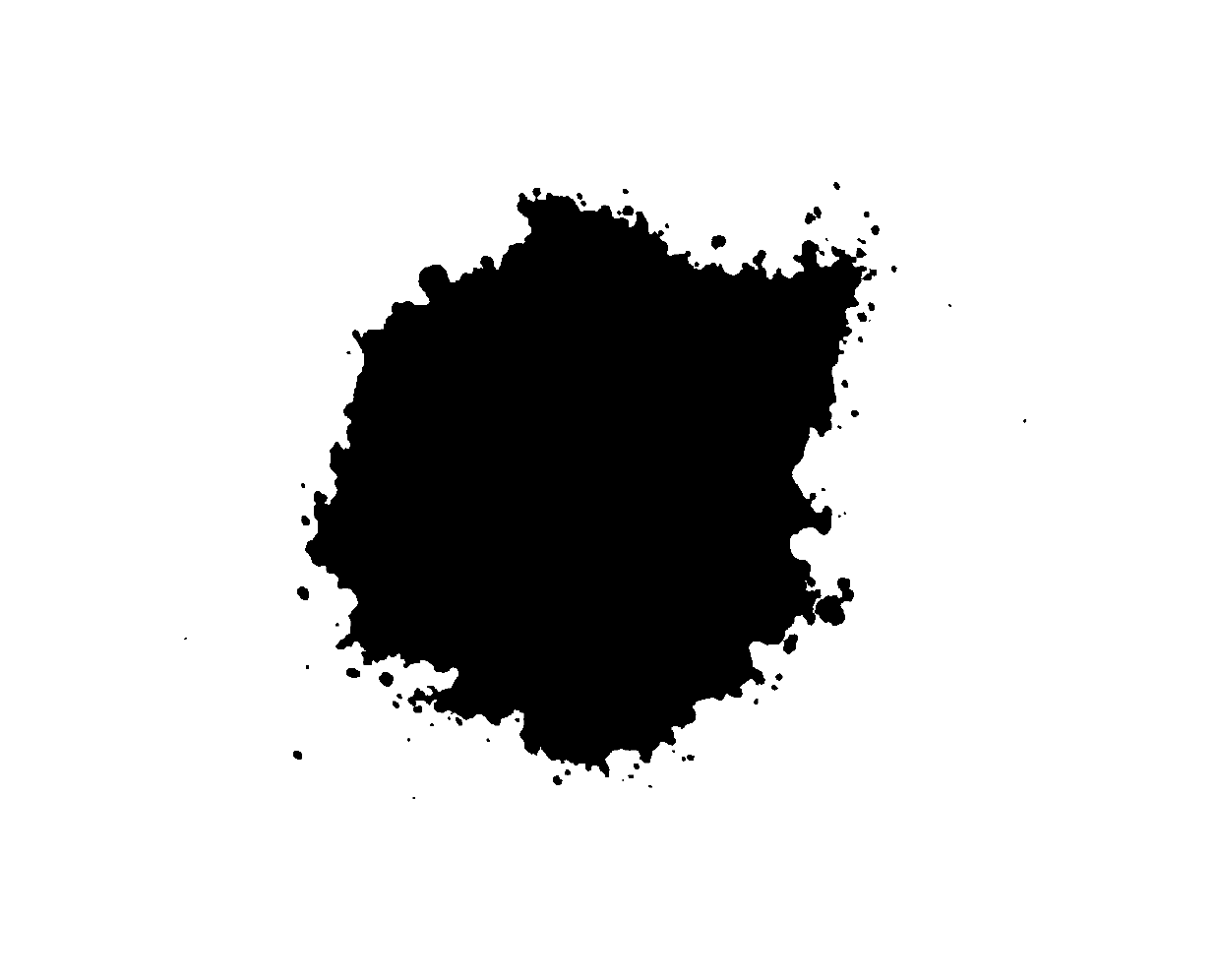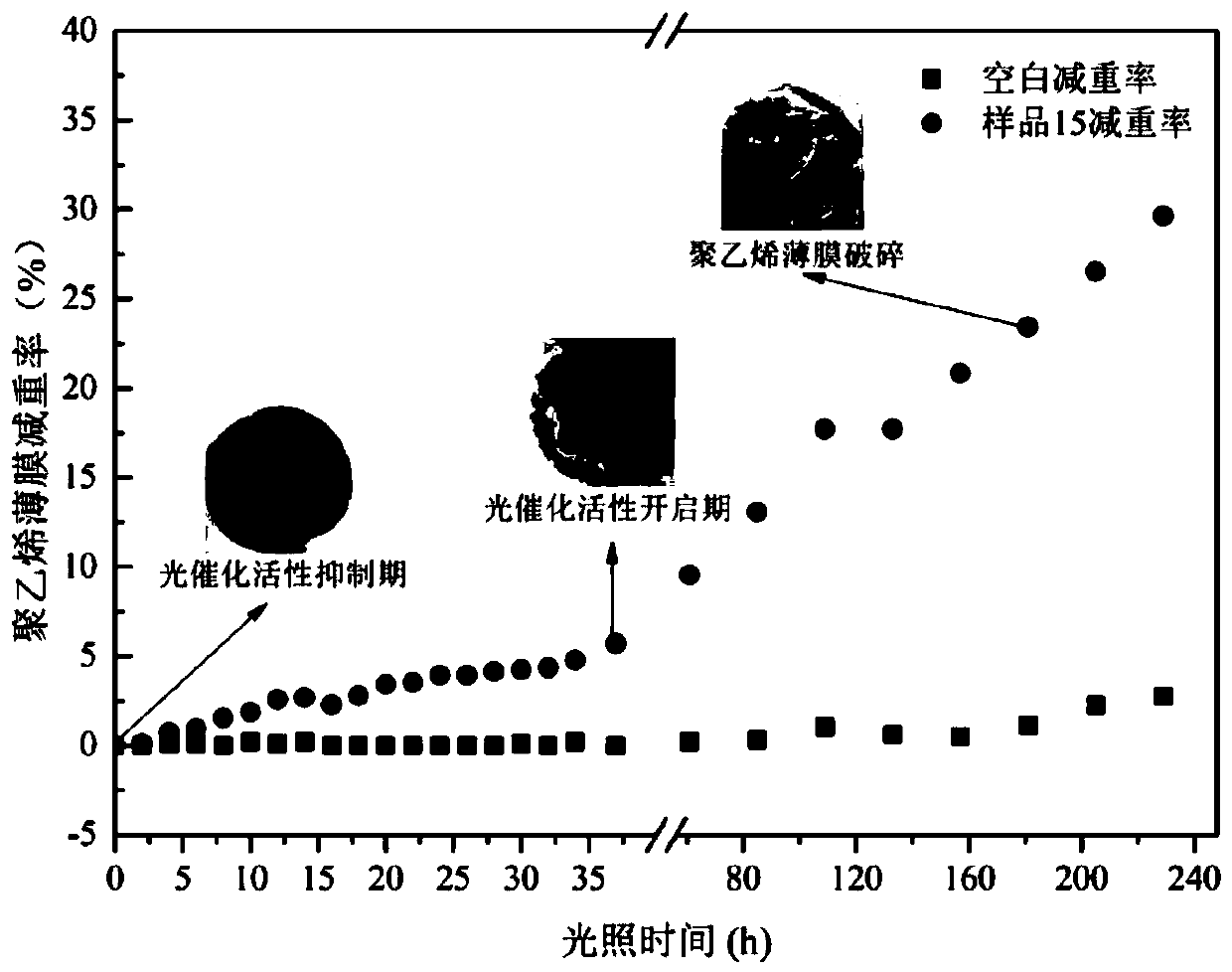Photocatalytic system with photoresponse switch and self-indication property as well as preparation method and application
A photocatalytic and photoresponsive technology, applied in the field of photocatalysis, can solve the problems of different degrees of degradation of plastics, no plastic stability period, no indicator system, etc.
- Summary
- Abstract
- Description
- Claims
- Application Information
AI Technical Summary
Problems solved by technology
Method used
Image
Examples
Embodiment 1
[0081] Step 1: Put the I 2 and KI according to the molar ratio I 2 : The ratio of KI=1:2, add it to the hydroxyethyl cellulose solution (molecular weight 90000) with a concentration of 0.25g / L, stir evenly, where I 2 The mass ratio to hydroxyethyl cellulose is 1:1. To the resulting mixed solution, add anatase TiO 2 powder, TiO 2 Powder and I 2 The mass ratio is 1:2. The mixture was stirred for 24 h, separated by filtration, and dried in an oven at 35°C. Grinding to make I 3 - / I -Modified TiO 2 powder.
[0082] Step 2: Soak 0.1g of amylose with 1mL of ethanol, then add 9mL of NaOH solution (1mol / L), heat in a boiling water bath for 10min, cool to room temperature, add water to dilute to 100mL, and mix amylose with a concentration of 1mg / mL liquid.
[0083] Step 3: Using HCl to adjust the pH value of the amylose mixture to 6.5-7.5 to prepare an amylose mixture with a pH of 6.5-7.5.
[0084] Step 4: the prepared I 3 - / I - Modified TiO 2 The powder is added into...
Embodiment 2
[0086] With embodiment 1, difference is that with I 2 and KI according to the molar ratio I 2 : The ratio of KI=1:2 is added in the 0.25g / L polyvinyl alcohol solution, contains the acetone of 2w% in the polyvinyl alcohol solution, I 2 The concentration is 0.5g / L. A photocatalytic system sample 2 with a photoresponsive switch and self-indicating was prepared.
Embodiment 3
[0088] Same as Example 1, except that isopropanol was used instead of ethanol, and reflux at 100°C was used instead of boiling water bath to prepare photocatalytic system sample 3 with photoresponsive switch and self-indicating.
PUM
| Property | Measurement | Unit |
|---|---|---|
| Concentration | aaaaa | aaaaa |
| Concentration | aaaaa | aaaaa |
Abstract
Description
Claims
Application Information
 Login to View More
Login to View More - R&D
- Intellectual Property
- Life Sciences
- Materials
- Tech Scout
- Unparalleled Data Quality
- Higher Quality Content
- 60% Fewer Hallucinations
Browse by: Latest US Patents, China's latest patents, Technical Efficacy Thesaurus, Application Domain, Technology Topic, Popular Technical Reports.
© 2025 PatSnap. All rights reserved.Legal|Privacy policy|Modern Slavery Act Transparency Statement|Sitemap|About US| Contact US: help@patsnap.com



